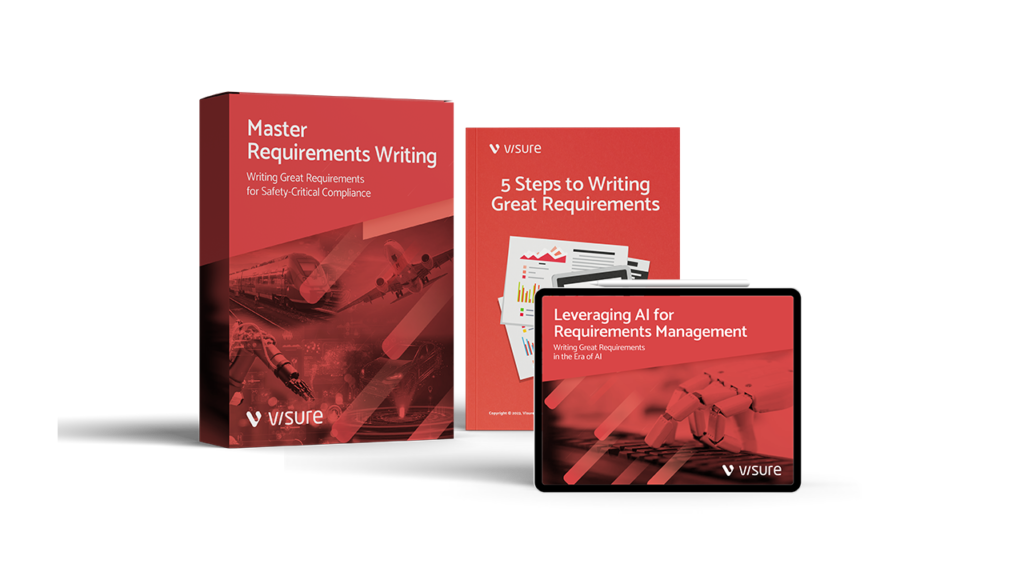Introduction In today’s fast-paced engineering and business environments, systems simulation has become an essential tool for designing, testing, and optimizing complex processes before they are built in the real world. From aerospace and automotive engineering to business process optimization and healthcare systems, simulation enables organizations to reduce risks, cut costs, and accelerate innovation. But what […]
Blog Visure solutions
Design for Manufacturing (DFM): A Complete Guide
Introduction In today’s competitive market, designing a product isn’t just about functionality or innovation, it’s also about how easily and cost-effectively it can be manufactured at scale. This is where Design for Manufacturing (DFM) comes in. DFM is a structured approach to optimizing product design for manufacturability, ensuring that parts, components, and assemblies are created […]
Read More… from Design for Manufacturing (DFM): A Complete Guide
What is a Functional Specification Document?
Introduction In software development and systems engineering, a Functional Specification Document (FSD) plays a critical role in ensuring project success. It serves as a detailed blueprint that defines what a system should do by outlining functional requirements, workflows, user interactions, and expected outcomes. Unlike a Business Requirements Document (BRD), which captures what the business needs, […]
Read More… from What is a Functional Specification Document?
How to Handle Conflicting Requirements in Business Systems
Introduction In today’s fast-paced digital landscape, business systems are becoming increasingly complex, involving multiple stakeholders, cross-functional teams, and evolving customer demands. One of the most common challenges organizations face in the requirements engineering process is dealing with conflicting requirements, when different stakeholders, departments, or end-users have overlapping, contradictory, or competing needs. If left unresolved, these […]
Read More… from How to Handle Conflicting Requirements in Business Systems
Requirements Coverage Analysis in Software Testing
Introduction In modern software testing, one of the biggest challenges organizations face is ensuring that every requirement is fully tested, validated, and traceable across the development lifecycle. This is where Requirements Coverage Analysis plays a critical role. By systematically mapping requirements to test cases, teams can identify coverage gaps, reduce project risks, and achieve end-to-end […]
Read More… from Requirements Coverage Analysis in Software Testing
Best BOM Management Software Tools in 2025
Introduction In 2025, Bill of Materials (BOM) Management Software has become a critical pillar for engineering, manufacturing, and product lifecycle teams aiming to deliver high-quality products faster and more cost-effectively. From engineering BOMs (EBOM) to manufacturing BOMs (MBOM), organizations are increasingly relying on advanced BOM management tools to ensure data accuracy, real-time collaboration, seamless PLM–ERP […]
EBOM vs MBOM: How To Simplify BOM Management
Introduction In today’s competitive manufacturing landscape, Bill of Materials (BOM) management plays a critical role in ensuring product quality, cost control, and timely delivery. Two essential types, Engineering Bill of Materials (EBOM) and Manufacturing Bill of Materials (MBOM), serve distinct purposes within the product lifecycle, yet must remain tightly aligned to avoid costly production errors. […]
Read More… from EBOM vs MBOM: How To Simplify BOM Management
What is a Bill of Materials (BOM)? | BOM Management
Introduction A Bill of Materials (BOM) is a comprehensive, structured list of all the raw materials, components, assemblies, and sub-assemblies required to manufacture, assemble, or repair a product. Serving as a single source of truth for product data, the BOM plays a critical role in manufacturing, engineering, and supply chain management by ensuring that every […]
Read More… from What is a Bill of Materials (BOM)? | BOM Management
Integrating MBSE and PLM
Introduction Model-Based Systems Engineering (MBSE) and Product Lifecycle Management (PLM) are two cornerstone disciplines driving digital transformation in complex product development. While MBSE focuses on creating, managing, and analyzing system models to define requirements, architecture, and behavior, PLM manages all product-related data, processes, and lifecycle stages, from concept through retirement. Integrating MBSE and PLM bridges […]
What is Mechatronics?
Introduction What is Mechatronics? Mechatronics is a multidisciplinary field that combines mechanical engineering, electronics, computer science, control systems, and automation to design and develop intelligent systems and products. This integration enables machines and devices to perform with higher precision, efficiency, and adaptability, forming the backbone of modern automation and smart manufacturing systems. The term “mechatronics” […]
